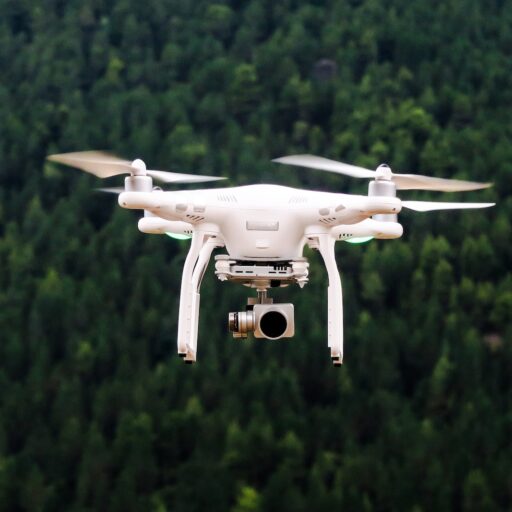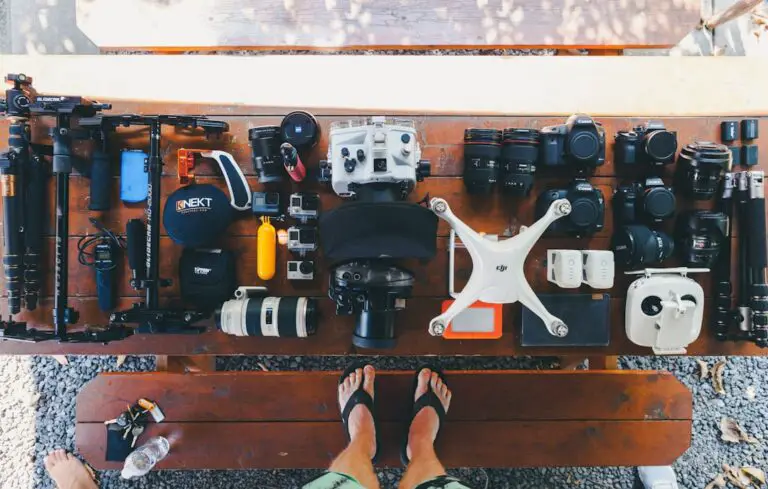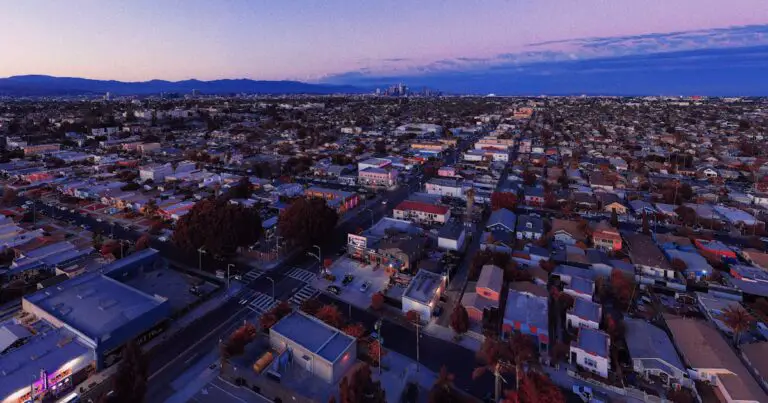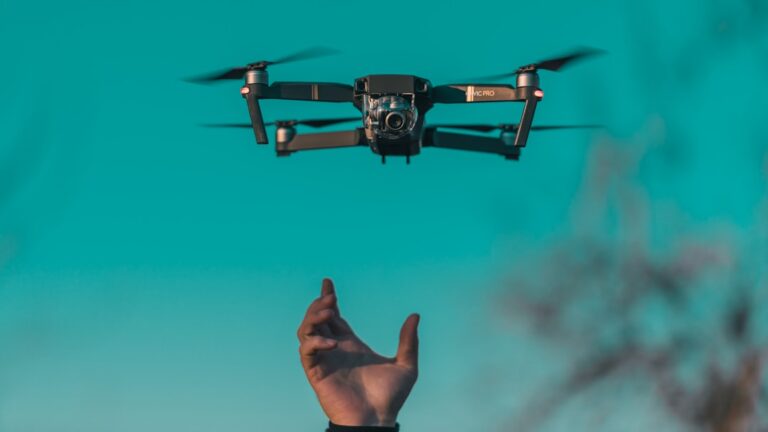Support our educational content for free when you purchase through links on our site. Learn more
FAA Drone Statistics (2025): 15 Eye-Opening Insights You Need to Know 🚁
Drones have taken over the skies—and the data behind their rise is nothing short of astonishing. Did you know that over 850,000 drones are registered with the FAA in 2025, buzzing above cities, farms, and construction sites alike? But what does this mean for safety, commerce, and the future of flight? At Drone Brands™, we’ve sifted through the FAA’s latest stats, incident reports, and market trends to bring you the most comprehensive, jaw-dropping insights on drone usage in the US.
From the dominance of DJI in the consumer market to the explosive growth of commercial drone pilots, and from near-misses with manned aircraft to the booming drone delivery sector, this article covers it all. Curious about how many drones fly legally at night? Or which industries pay drone pilots the most? Stick around—we’ve got the answers and expert tips that will keep you flying smart and safe.
Key Takeaways
- Over 855,000 drones are registered with the FAA, with recreational flyers making up nearly two-thirds of that number.
- More than 400,000 commercial drone pilots are certified, fueling a multi-billion-dollar industry in agriculture, infrastructure, and delivery.
- DJI controls nearly 80% of the US consumer drone market, thanks to innovation and user-friendly designs.
- 92% of FAA waivers granted are for night flights, highlighting the growing demand for extended operational hours.
- Drone incidents near airports remain a top safety concern, emphasizing the need for strict adherence to regulations.
- Drone insurance and FAA waivers are essential for commercial operators to protect investments and expand capabilities.
Ready to upgrade your gear or start flying commercially? Check out popular DJI drones here:
- DJI Mini 4 Pro: Amazon | DJI Official
- DJI Mavic 3 Pro: Amazon | DJI Official
Table of Contents
- ⚡️ Quick Tips and Facts
- 📜 Tracing the Skies: A Brief History of FAA Drone Oversight
- 📈 Unveiling the Numbers: US Drone Statistics 2025 and Beyond
- 🚨 Navigating the Airspace: Drone Incident and Accident Statistics
- 💰 Flying High: The Economic Impact of Drone Service Providers
- ⚖️ Clearing for Takeoff: FAA Drone Permissions and Authorizations
- 🚀 More Than Just a Hobby: The Efficiency and Versatility of Drones
- 🏆 The Reign of Giants: DJI Drone Statistics and Market Dominance
- 🏎️ Speed Demons: Racing Drones Market Facts and the Thrill of FPV
- 🛡️ Protecting Your Investment: Drone Insurance Essentials
- 🌐 The Future of Flight: Emerging Drone Technologies and Regulations
- ✅ Drone Safety Best Practices: Our Expert Recommendations
- Conclusion
- Recommended Links
- FAQ
- Reference Links
⚡️ Quick Tips and Facts
Welcome, fellow aviators and drone enthusiasts, to the Drone Brands™ flight deck! We’re about to take a deep dive into the wild world of FAA drone statistics, and trust us, it’s more exciting than it sounds. Before we get into the nitty-gritty, let’s get you cleared for takeoff with some high-level intel. If you’re looking for a comprehensive overview, our main article on drone statistics is your perfect co-pilot.
Here are the key takeaways you need to know right now:
- Total Registered Drones: As of early 2025, the FAA has a staggering 855,860 drones registered in the US. That’s a whole lot of buzzing in the skies!
- Recreational vs. Commercial: The split is fascinating! About 63% (536,183) are for recreational fun, while 37% (316,075) are for commercial work.
- Pilot Certifications: There are over 400,000 certified commercial drone pilots in the US. For every one of these pros, there are roughly 1.8 hobby pilots who have passed the TRUST test.
- Market Leader: DJI isn’t just a player; it’s the undisputed champion, commanding nearly 80% of the US consumer drone market.
- Economic Boom: The drone industry is projected to create 100,000 new jobs in the US by 2025. 🧑✈️
- Night Flyers: What’s the most common reason pilots ask the FAA for special permission? Flying at night! A whopping 92% of Part 107 waivers are for nocturnal operations.
📜 Tracing the Skies: A Brief History of FAA Drone Oversight
Ever wonder how we went from radio-controlled toys to a sky filled with sophisticated, regulated aircraft? It’s been a wild ride. Here at Drone Brands™, we’ve had a front-row seat. I remember the “Wild West” days before 2015, when the rules were… let’s just say, less defined.
The FAA, realizing that drones weren’t just a passing fad, stepped in to create order from the chaos.
- The Registration Era (2015): The FAA rolled out the first mandatory drone registration system. Suddenly, every drone weighing more than 0.55 lbs (250 grams) needed a number, linking the aircraft to its owner. This was the first major step towards accountability.
- The Birth of Part 107 (2016): This was the game-changer for commercial pilots. The Part 107 rule created a clear pathway for flying drones for business, establishing the Remote Pilot Certificate. This opened the floodgates for countless Drone Business Opportunities.
- TRUST for Hobbyists (2021): To ensure recreational flyers understood the basic rules of the sky, the FAA introduced The Recreational UAS Safety Test (TRUST). It’s a simple, free online test that every hobbyist must pass.
- Remote ID (2023): The latest evolution is Remote ID, which acts like a digital license plate for drones. It broadcasts identification and location information, enhancing safety and security for everyone.
This journey shows a clear trend: as drone technology advances, so does the framework designed to keep our skies safe.
📈 Unveiling the Numbers: US Drone Statistics 2025 and Beyond
Alright, let’s crunch the numbers. The FAA’s data gives us a fascinating snapshot of the drone landscape in the United States. It’s not just about how many drones there are, but who is flying them and why.
| Category | Registered Drones | Registered Pilots | Key Requirement |
|---|---|---|---|
| Recreational | 536,183 | 388,838 | TRUST Certificate |
| Commercial | 316,075 | > 400,000 | Part 107 Certificate |
| Total (approx.) | 855,860 | > 788,838 | FAA Registration |
Data compiled from various 2024 and 2025 reports.
📊 Key Drone Statistics for Recreational Pilots
So, you’re flying for fun? You’re in good company! The majority of registered drones belong to hobbyists. But here’s a curious discrepancy: there are way more TRUST certificates issued (852,456) than registered recreational pilots (388,838).
What gives? The Drone Girl blog points out a key detail: “The [recreational flier registration] covers all drones in that pilot’s inventory.” This means one pilot can own a dozen drones under a single $5 registration. ✅ It also suggests many people take the free TRUST test out of curiosity before ever buying a drone.
A huge factor here is the rise of sub-250g drones. Models like the DJI Mini 4 Pro and Autel EVO Nano+ are incredibly popular because, in many cases, they don’t require FAA registration for purely recreational use. This means the actual number of hobbyist drones in the US is likely well over a million.
🏢 Commercial Drone Operations in the US
On the commercial side, the numbers tell a story of explosive growth. With over 400,000 certified pilots and 316,075 registered commercial drones, business is booming. Unlike the recreational rules, commercial pilots must register each drone they operate.
This sector is the backbone of the drone economy, with applications in everything from real estate photography to agricultural surveying. The largest market for commercial drones is agriculture, followed closely by construction and infrastructure. The potential value for drones in the global infrastructure market alone is estimated to be as high as $45 billion. That’s not just a niche; it’s a revolution.
🚨 Navigating the Airspace: Drone Incident and Accident Statistics
With more drones in the sky, safety becomes paramount. The FAA keeps a close eye on sightings and incidents, and the data is a sobering reminder to always fly responsibly. Let’s be clear: flying a drone is incredibly safe when done correctly, but mistakes can have serious consequences.
The FAA receives over 100 reports of unmanned aircraft sightings per month from pilots, citizens, and law enforcement. Many of these are harmless, but some are dangerously close calls.
💥 Understanding Drone Accident Causes
So, what causes these close calls? A detailed analysis of drone incident reports reveals some alarming trends:
- Proximity to Airports: Over 60% of drone-aircraft close encounters happened within 200 feet of an airport. This is a massive no-fly zone for a reason, folks!
- Dangerously Close: The data is chilling. “More than one in five drone-aircraft close encounters were within 50 feet of each other. This distance is especially dangerous, as a collision between a drone and an aircraft at such a close range could have serious consequences.”
- Aircraft Types Involved:
- Single-engine prop aircraft: 125 incidents
- Multi-engine jet aircraft: 116 incidents
- Helicopters: 38 incidents
- Time of Day: Most incidents (over two-thirds) occur during daytime hours, peaking between 2 p.m. and 6 p.m.
The takeaway? Situational awareness is everything. Always know your airspace and follow the rules. Our team at Drone Brands™ has a mantra: “Check your map, check your surroundings, check your gear.”
🤕 Drone Injury Statistics and Prevention
While mid-air collisions are rare, injuries on the ground are more common, usually due to operator error or equipment failure. The statistics show that between 2015 and 2020, there were approximately 4,250 drone-related injuries.
- Who gets hurt? The vast majority (84%) were male.
- What gets hurt? Fingers are the most common victim (56%), typically from spinning propellers. This is followed by the head (24%).
- How bad is it? Lacerations (cuts) are the most frequent diagnosis (72%).
How to avoid becoming a statistic?
✅ Use propeller guards, especially when flying indoors or near people.
✅ Never try to catch a drone by hand while the motors are armed.
✅ Maintain a safe distance from people and property.
✅ Practice in an open area to build your skills. Check out our guides on Beginner Drones for tips on getting started safely.
💰 Flying High: The Economic Impact of Drone Service Providers
Drones are more than just flying cameras; they’re powerful economic engines. From solo entrepreneurs to large corporations, the drone service industry is creating jobs and generating serious revenue. Businesses and the government collectively spent $13 billion on drones in the past year alone.
💼 Income of US Drone Service Providers: What to Expect
Thinking of turning your passion into a profession? The earning potential is significant, but it varies wildly by industry. According to one report, the Oil & Gas industry is the highest paying for drone pilots, with an average hourly rate of a whopping $195.
Other lucrative sectors include:
- Industrial Inspection: Surveying power lines, wind turbines, and cell towers.
- Cinematography: Capturing breathtaking aerial shots for movies and commercials.
- Real Estate & Construction: Providing progress photos, 3D models, and marketing videos.
- Agriculture: Using multispectral sensors to monitor crop health.
The key is specialization. Finding a niche and becoming the go-to expert is how you command higher rates.
🌍 The Global Drone Market: Trends and Forecasts
The US market is huge, but it’s part of an even bigger global picture. The global drone market was valued at $43 billion in 2025, with steady growth expected. This expansion is fueled by advancements in AI, battery life, and sensor technology, making drones more capable and accessible than ever. Keep an eye on our Drone Industry News section for the latest developments.
⚖️ Clearing for Takeoff: FAA Drone Permissions and Authorizations
Navigating the world of FAA regulations can feel like trying to read a flight manual in turbulence. But don’t worry, we’re here to be your guide. Understanding the rules isn’t just about compliance; it’s about being a safe and responsible member of the aviation community. For a deep dive, our Drone Laws and Regulations category is your best resource.
📝 Drone Registration and Use in the US: Your Guide
First things first: registration. Does your drone need it?
- YES ✅: If it weighs 0.55 lbs (250g) or more.
- YES ✅: If you are flying it for any commercial purpose (Part 107), regardless of weight.
- NO ❌: If it weighs less than 250g AND you are flying it strictly for recreation.
How to Register:
The only place to register is the official FAA DroneZone website: https://faadronezone-access.faa.gov/. As The Drone Girl wisely warns, “Don’t register at any other website. Any other website purporting to help you register your drone is very likely a scam.”
- Cost: It’s $5 per registration, valid for three years. For recreational pilots, this covers your entire fleet. For commercial pilots, it’s $5 per drone.
📜 Beyond the Rules: FAA Flight Restriction Exemptions and Waivers
What if your mission requires you to bend the standard Part 107 rules? That’s where waivers come in. A waiver is special permission from the FAA to operate outside of certain limitations. And guess what? The FAA grants 46% of waiver requests.
So, what are pilots asking for?
- Flying at Night (Section 107.29): This is the big one, accounting for an incredible 92% of all granted waivers. With proper anti-collision lights, night operations can be conducted safely.
- Flying Over People (Section 107.39): A much smaller slice, at around 2%. This requires a drone with specific safety features.
- Beyond Visual Line of Sight (BVLOS – Section 107.31): Also around 2%. This is the holy grail for operations like long-distance pipeline inspections and package delivery.
Speaking of BVLOS, the FAA is currently working on new rules under Part 108 to make these operations more routine. The excellent first YouTube video embedded in this article from Pilot Institute provides a fantastic deep dive into what these proposed changes mean for the future of drone flight.
🚀 More Than Just a Hobby: The Efficiency and Versatility of Drones
We’ve seen it firsthand: drones are transforming industries. They’re not just tools; they’re force multipliers, offering efficiency, safety, and data-gathering capabilities that were once unimaginable.
🏗️ Workhorses of the Sky: Types and Applications of Commercial Drones
The type of drone you use depends entirely on the job.
- Photography/Videography: Lightweight, stable platforms like the DJI Mavic 3 Pro are king.
- Surveying/Mapping: Drones equipped with RTK/PPK technology, such as the DJI Phantom 4 RTK, provide centimeter-level accuracy.
- Inspection: Rugged drones with thermal and zoom cameras, like the DJI Matrice 300 series, are essential for inspecting infrastructure.
- Agriculture: Large, heavy-lift drones like the DJI Agras T40 are used for crop spraying.
📦 The Future is Now: Drone Delivery and E-Commerce Statistics
It’s no longer science fiction. Companies like Zipline, Wing (an Alphabet company), and Amazon Prime Air are actively making drone deliveries. While still in early stages, the sector is growing rapidly, delivering everything from medical supplies to your late-night snacks. The key challenge? Scaling operations while navigating complex urban airspace regulations.
🔍 Eyes in the Sky: Drones in Search and Rescue Operations
This is where drones truly become heroes. Equipped with thermal cameras, a drone can scan a vast, difficult-to-reach area for a missing person in minutes—a task that could take a ground team hours. They provide a critical aerial perspective to first responders, helping to locate victims and assess dangerous situations without risking human lives.
🗺️ Precision from Above: Drone Surveying and Mapping
Need a Drone Survey? Drones have revolutionized surveying. They can create highly detailed 3D models and orthomosaic maps of construction sites, mines, and land parcels with incredible speed and accuracy. This data helps in planning, monitoring progress, and calculating volumes, saving projects significant time and money.
🏆 The Reign of Giants: DJI Drone Statistics and Market Dominance
When you talk about consumer and prosumer drones, you’re really talking about one name: DJI. Their dominance is staggering. As one report states, “DJI owns nearly 80% of the market for drones in the United States.” Globally, their share is around 54%.
Why are they so dominant?
- Innovation: They are constantly pushing the boundaries of camera quality, flight time, and obstacle avoidance.
- Ease of Use: DJI drones are famously user-friendly, making advanced aerial photography accessible to beginners.
- Ecosystem: They offer a complete package of hardware, software (like the DJI Fly app), and accessories.
From the beginner-friendly Mini series to the professional Inspire series, DJI has a drone for nearly every use case and budget. Our Drone Brand Guides can help you navigate their extensive lineup.
👉 Shop Popular DJI Drones on:
- DJI Mini 4 Pro: Amazon | DJI Official Website
- DJI Air 3: Amazon | DJI Official Website
- DJI Mavic 3 Pro: Amazon | DJI Official Website
🏎️ Speed Demons: Racing Drones Market Facts and the Thrill of FPV
Let’s switch gears from smooth cinematic shots to high-octane, adrenaline-pumping action! The First-Person View (FPV) and drone racing market is a vibrant and growing subculture within the drone world. These aren’t your GPS-stabilized camera drones; these are custom-built rockets that can hit speeds well over 100 mph.
The market is driven by a passionate community of builders, tinkerers, and pilots who compete in leagues like the Drone Racing League (DRL). While smaller than the consumer market, it’s a hotbed of innovation, pushing the limits of motor performance, video transmission, and flight controller technology.
🛡️ Protecting Your Investment: Drone Insurance Essentials
We never fly a commercial mission without it, and you shouldn’t either. Drone insurance is crucial. If you’re flying under Part 107, liability insurance is a must-have to protect you and your business from the financial fallout of an accident.
There are two main types:
- Liability Insurance: Covers damage to property or injury to third parties. Many clients will require you to have a policy of at least $1 million.
- Hull Insurance: Covers damage to your drone and equipment itself.
Companies like SkyWatch.AI and Verifly offer flexible, on-demand insurance that you can purchase by the hour, day, or month, making it accessible even for occasional commercial pilots.
🌐 The Future of Flight: Emerging Drone Technologies and Regulations
What’s next on the horizon? The pace of change is breathtaking. We’re seeing incredible advancements in:
- Artificial Intelligence: Drones that can autonomously navigate complex environments, track subjects with pinpoint accuracy, and even identify potential hazards.
- Swarms: The coordination of multiple drones flying together to accomplish a single task, from spectacular light shows to complex search patterns.
- Battery Technology: The quest for longer flight times continues, with new battery chemistries and hybrid gas-electric systems on the verge of breaking new ground.
On the regulatory front, the FAA is working to integrate drones more seamlessly into the National Airspace System. This includes developing frameworks for Unmanned Traffic Management (UTM) systems and finalizing rules for BVLOS operations (Part 108), which will unlock the true potential of drone delivery and long-range inspections.
✅ Drone Safety Best Practices: Our Expert Recommendations
Statistics are useful, but safety is practical. At Drone Brands™, we drill these rules into every pilot we train. Follow them, and you’ll be a safe and respected aviator.
- Have a Pre-Flight Checklist: Just like a real pilot. Check your props, batteries, weather, and firmware.
- Understand Your Airspace: Use an app like B4UFLY or Aloft to check for restrictions before every flight.
- Maintain Visual Line of Sight (VLOS): Unless you have a specific waiver, you must be able to see your drone with your own eyes at all times.
- Never Fly Under the Influence: This should be obvious, but it needs to be said.
- Respect Privacy: Don’t be “that guy.” Avoid flying over private property without permission or hovering outside windows.
- Yield to Manned Aircraft: They have the right of way. Always. If you see a plane or helicopter, bring your drone down to a lower altitude and give them plenty of space.
Conclusion
Phew! What a flight through the fascinating world of FAA drone statistics and the broader drone ecosystem. From the sky-high numbers of registered drones to the nitty-gritty of safety incidents and economic impact, it’s clear that drones are no longer just toys — they’re powerful tools reshaping industries and creating new opportunities.
Key takeaways? The FAA’s drone registration system has brought much-needed order to the skies, balancing innovation with safety. Recreational pilots dominate the numbers, but commercial operators are rapidly growing and pushing the boundaries with waivers for night flights and BVLOS operations. DJI remains the titan of the drone market, but the landscape is rich with specialized applications — from search and rescue to racing drones.
We also addressed the critical safety concerns: close encounters near airports, injuries caused by propellers, and the importance of following FAA rules. Our expert advice? Fly smart, register your drone, get insured, and always respect the airspace and privacy of others.
If you’re wondering about turning your drone hobby into a career, the economic stats show promising income potential, especially in high-demand sectors like oil & gas and infrastructure inspection.
And remember, the drone industry is evolving fast — with AI, swarm tech, and new FAA regulations on the horizon. Staying informed and compliant will keep you flying high and safe.
So, whether you’re a casual flyer or a commercial pilot, the skies are yours to explore — responsibly and confidently.
Recommended Links
Ready to take your drone game to the next level? Check out these top picks and resources:
Popular DJI Drones
- DJI Mini 4 Pro: Amazon | DJI Official Website
- DJI Air 3: Amazon | DJI Official Website
- DJI Mavic 3 Pro: Amazon | DJI Official Website
Drone Insurance Providers
- SkyWatch.AI: Official Site
- Verifly: Official Site
Books on Drone Flying and FAA Regulations
- “The Drone Pilot’s Handbook” by Adam Juniper — Amazon
- “FAA Part 107 Remote Pilot Test Prep” by Drone Pilot Ground School — Amazon
- “Drones: Their Many Civilian Uses and the U.S. Laws Surrounding Them” by Mark A. Lemley — Amazon
FAQ
How many drones are registered with the FAA in 2024?
As of early 2025, the FAA reports approximately 855,860 registered drones in the United States. This includes both recreational and commercial drones. Keep in mind, drones weighing less than 250 grams used recreationally often do not require registration, so the actual number of drones in use is likely higher.
Read more about “🚁 Top 7 Best Drones with Cameras for Beginners (2025)”
What are the most common uses for FAA-registered drones?
FAA-registered drones serve a wide range of purposes. Recreational flying remains the largest category, but commercial uses are rapidly expanding. The top commercial applications include:
- Agriculture: Crop monitoring and spraying
- Construction and Infrastructure: Site surveying and inspection
- Real Estate: Aerial photography and videography
- Industrial Inspection: Power lines, wind turbines, and pipelines
- Search and Rescue: Thermal imaging and rapid area scans
Read more about “How Many People Fly Drones? 15 Surprising Facts You Need to Know (2025) 🚁”
How has FAA drone registration grown over the past decade?
Drone registration began in 2015 with the FAA’s initial registration system. Since then, the number of registered drones has exploded, driven by:
- The introduction of Part 107 for commercial pilots in 2016
- The TRUST safety test for recreational flyers in 2021
- The rollout of Remote ID requirements in 2023
This growth reflects both increased drone adoption and tighter regulatory oversight.
Read more about “Drone Statistics by Year (2025): 10 Eye-Opening Trends You Must Know 🚁”
What safety regulations does the FAA enforce for drone pilots?
The FAA’s key safety regulations include:
- Registration of drones over 250g or used commercially
- Maintaining Visual Line of Sight (VLOS) during flight
- Restrictions on flying near airports, people, and at night without waivers
- Completion of the TRUST test for recreational pilots
- Obtaining a Part 107 Remote Pilot Certificate for commercial operations
These rules aim to minimize risks to manned aircraft and people on the ground.
Read more about “What Drone Jobs Pay the Most? Top 10 High-Paying Roles in 2025 🚁💸”
How does the FAA track drone flight activity across the US?
The FAA uses several tools to monitor drone activity:
- Remote ID: A digital “license plate” system broadcasting drone ID and location in real-time
- Incident Reports: Pilots and the public report sightings and close encounters
- Flight Restriction Zones: Apps like B4UFLY help pilots avoid restricted airspace
- Waiver Applications: Tracking special permissions for flights outside standard rules
Together, these systems help maintain situational awareness and safety.
What percentage of drones are used for recreational vs commercial purposes?
Approximately 63% of registered drones are for recreational use, while 37% are commercial. However, commercial drone pilots tend to register each drone individually, whereas recreational pilots can register multiple drones under one registration, so the actual number of commercial drones may be underrepresented.
Read more about “What Percentage of Drones Are Used for Recreation vs. Commercial in 2025? 🚁”
How do FAA drone statistics impact aerial photography and videography trends?
FAA drone statistics reveal a booming market for aerial imaging. With over 400,000 certified commercial pilots, many specialize in photography and videography, driving demand for drones with advanced cameras like the DJI Mavic 3 Pro. The ability to capture stunning visuals from unique perspectives has transformed marketing, real estate, and entertainment industries, making drone imaging a mainstream tool.
Reference Links
- FAA Drone Registration Data: https://www.faa.gov/uas/getting_started/register_drone
- FAA Part 107 Rules: https://www.faa.gov/uas/commercial_operators
- The Drone Girl — Drone Registration and FAA Updates: https://www.thedronegirl.com/2024/04/01/drones-in-2024/
- SkyKam — Drone Statistics and Safety: https://skykam.co.uk/drone-statistics/
- DJI Official Website: https://www.dji.com/
- FAA Study Led by Embry-Riddle Warns of Drone Risks to Aircraft: https://news.erau.edu/headlines/faa-study-led-by-embry-riddle-warns-of-drone-risks-to-aircraft
- Drone Racing League (DRL): https://thedroneracingleague.com/
- Zipline Drone Delivery: https://www.flyzipline.com/
- Wing (Alphabet) Drone Delivery: https://wing.com/
- Amazon Prime Air: https://www.amazon.com/primeair?tag=bestbrands0a9-20
We hope this comprehensive guide has answered your burning questions and fueled your passion for drones. Until next time, keep your batteries charged and your flights safe! 🚁✨









